Several variants of mechanizing the powerful 76 mm 17-pounder gun were developed by the end of 1943. One of them involved installing the gun on various types of Sherman tanks. The new Sherman Ic and Sherman Vc tanks passed trials at proving grounds in early 1944, but had yet to prove their worth on the battlefield.
Live and learn
To start, let us make a small note about the name of these tanks. The Sherman Ic and Sherman Vc (also stylized IC and VC) are commonly known under the name Firefly. This nickname did not come from official documents. Just the opposite, British commanders tried to fight it and mandated that these tanks be called only by their proper names. No one knows where the nickname came from, but it appears to have been British in origin. New Zealanders who used these tanks in Italy did not seem to ever use this name. These tanks were also called Sherman C and Sherman 17-pounder in official documents. Although unofficial, the name Firefly will be used in this article to refer to Sherman tanks equipped with 17-pounder guns.
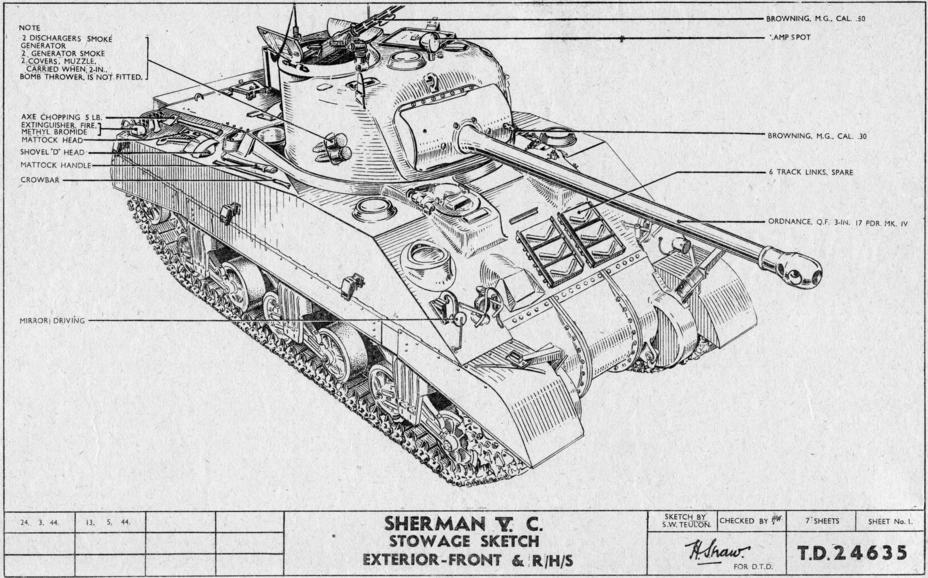
The appearance of these “Firefles” was not only a big step forward in regards to combat effectiveness, but also raised morale. These tanks had powerful guns and could combat the Tiger and Panther on equal footing. A War Cabinet memorandum issued on July 20th, 1944, proudly stated that the Germans had nothing new to offer, while the British army was equipped with a number of new fighting machines. The “Sherman tank with a 17-pounder gun” was the first on that list. The British had high hopes for their new tank. General Montgomery wrote:
“We have nothing to fear from the Panther and Tiger tanks; they are unreliable mechanically, and the Panther is very vulnerable from the flanks. Our 17-pdr gun will go right through them. Provided our tactics are good we can defeat them without difficulty.”
The tanks began to arrive in their units shortly before D-Day. For instance, 21st Army Group only issued two Sherman Vc tanks to its units by April 22nd, 1944, with 13 vehicles in reserve. The number of issued tanks reached 22 by May 13th and remained at this level until D-Day. In addition to the Sherman Vc, the Anglo-Canadian formation had 10 Sherman tanks with 105 mm guns and 85 ordinary Sherman III tanks.
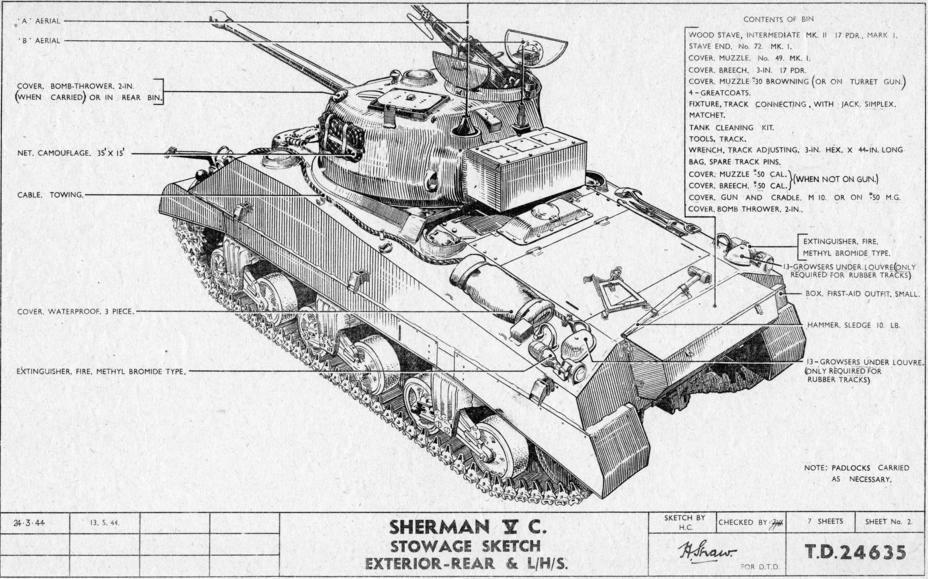
This kind of shortage of tanks reflected on the quality of training. For instance, E Group was supposed to receive 15 tanks with 17 pounders for training, but had yet to receive a single one by July 15th. There was also a shortage of spare parts, and the group was happy to accept even the outdated Ram tanks. Major General Roberts feverishly wrote letters to HQ, demanding even a single Firefly. His superiors understood his situation, but could offer nothing. Each tank was needed on the front lines. Front line commanders would rather receive untrained crews than part with a single tank. To at least somehow mitigate this shortage, four towed 17-pounders were given to E Group. Unfortunately, these were Mk.I guns. The Shermans were initially equipped with Mk.IV guns and with Mk.VII guns after October of 1944, so these guns were largely unsuitable even for training.
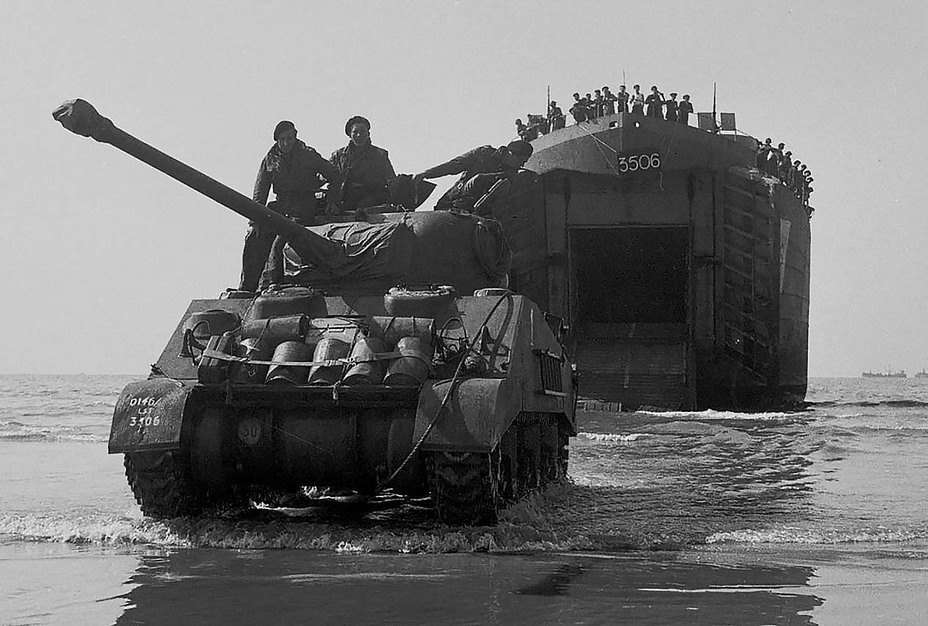
The situation began to improve towards the end of the year. On November 1st E Group was allocated two tanks and another one was issued 10 days later. One tank was kept in Thursley Common for preliminary training and two were used at Lulworth for training gunners. This was still not enough, as even in the best case scenario a gunner could depart for Europe having fired only three shots from a 17-pounder gun. The deficit of tanks was still noticeable by early 1945, and E Group requested three more tanks. Their request was granted on January 17th, but on the condition that the tanks be kept combat ready, as the 21st Army Group had the right to requisition them at any moment.
Meanwhile, the situation with Sherman Ic and Sherman Vc tanks on the continent also left much to be desired. On paper, an armoured regiment was supposed to have 15 tanks with 17-pounders, but in practice these were replaced with ordinary Shermans. The aforementioned 21st Army Group had only 22 tanks between its three regiments. The number of tanks was only brought up to par by the end of 1944.
The situation was much better by early April 1945. Each regiment now contained 24 Sherman Ic or Sherman Vc tanks: two tanks out of four in each troop, four troops per squadron, three squadrons per regiment. There were plans to replace all the remaining Shermans with either Fireflies or the Sherman IIA with a 76 mm gun. Cromwell tanks also fought side by side with Fireflies. Tank troops of the 1st Czechoslovak Armoured Brigade were composed of two Cromwells and one Sherman with a 17-pounder.
Float like a butterfly, sting like a Firefly
Tank commanders understood that tanks with long barrels would be a priority target for the Germans, and so attempts were made to disguise them. One option was to make ordinary Shermans look like the much more dangerous Fireflies. A fake 17-pounder barrel was either attached to the gun mantlet of a regular Sherman tank or a sleeve was mounted over the gun. Work on this solution went on for months, but trials showed that none of the mountings were satisfactory. The fake barrel upset the balance of the turret and some variants fell off when the real gun was fired. The opposite had to be done: the long gun had to be disguised as a short one. There were two ways of doing this.
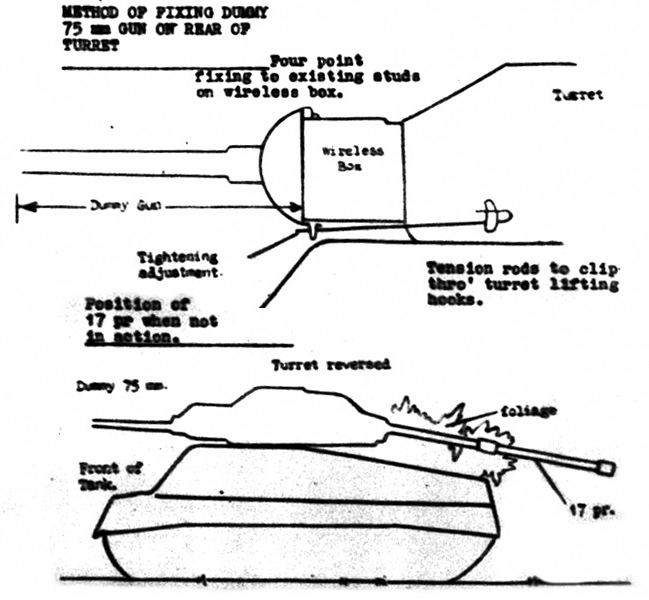
The first was used in the 8th Army starting in October of 1944. A fake muzzle brake was installed in the middle of the barrel, in the same place where the 75 mm gun normally ended. The lower part of the remaining barrel was painted white with a wavy border to disguise the shadow on the underside of the barrel. This disguise was quite effective at long range, but the fake muzzle brake gave it away, as the normal 75 mm gun didn’t have one.
The second method was more complicated. The turret was turned backwards, and a fake 75 mm gun barrel was installed on the turret bustle. The real barrel was concealed in branches that were laid on the engine deck.
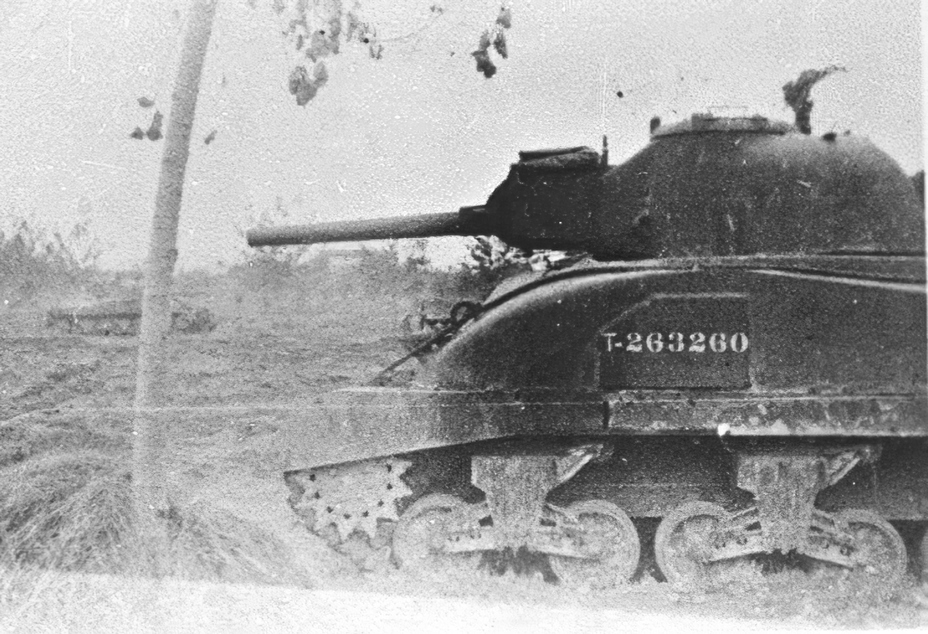
Both methods were shown to a commission on October 18th. The commission liked the first variant, but the reaction to the second was mixed. Driving towards the enemy with your gun pointed the wrong way would be difficult to sell to the crews, especially since it would take some time to turn the turret around in battle. Nevertheless, the order to begin production of fake barrels was given. At least 50 barrels were produced by February 26th, 1945, and 24 of them installed on tanks.
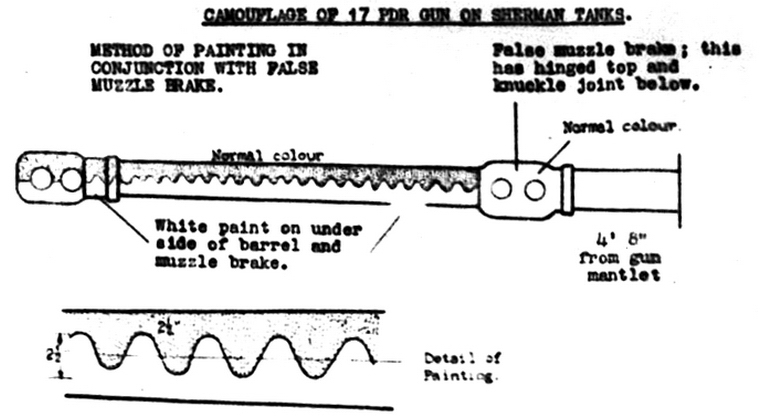
It’s hard to say how these disguises helped the tanks survive on the battlefield. One can only say that Firefly losses were no greater than that of ordinary Shermans and sometimes even less. For example, a report from the 21st Army Group on losses between June 6th, 1944, and February 3rd, 1945, gives an average rate of 145.1 Shermans with 75 mm gun lost monthly (12.6% of the total) compared to 26.1 Fireflies (6.2% of the total). This ratio might also have been influenced by commanders trying to keep their rare and more expensive tanks safe.
As it often happens with new vehicles, the tanks also went out of action for technical reasons. One common cause of complaints was the turret travel lock. It broke from sharp shocks and was too weak to hold the turret in place when the tank was tilted. The design was improved and parts for a new travel lock were sent to the end users for field conversions.
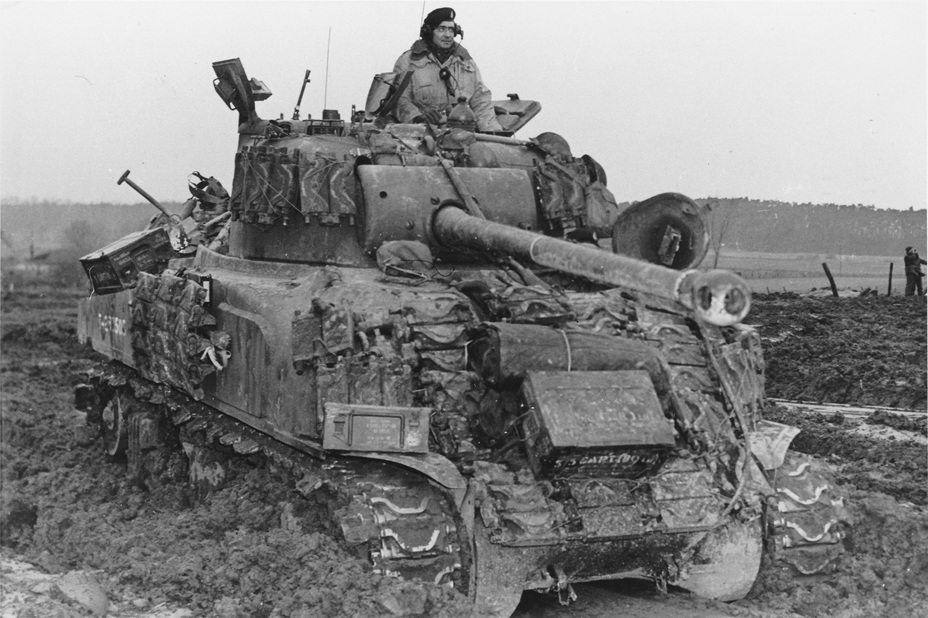
The gun travel clamp was also harshly criticized. Since the heavy gun put a lot of pressure on the elevation mechanism, it had to be used very often to prevent wear. This was very inconvenient, since the clamp was located on the engine deck and the turret had to be turned around to engage it. Tankers preferred a Panther style travel clamp on the upper front plate, and some crews even attempted to transplant these clamps from captured tanks. A front travel clamp that could be disengaged by the driver was tested in December of 1944, but presumably the trials were unsuccessful since the issue was raised multiple times before the end of the war.
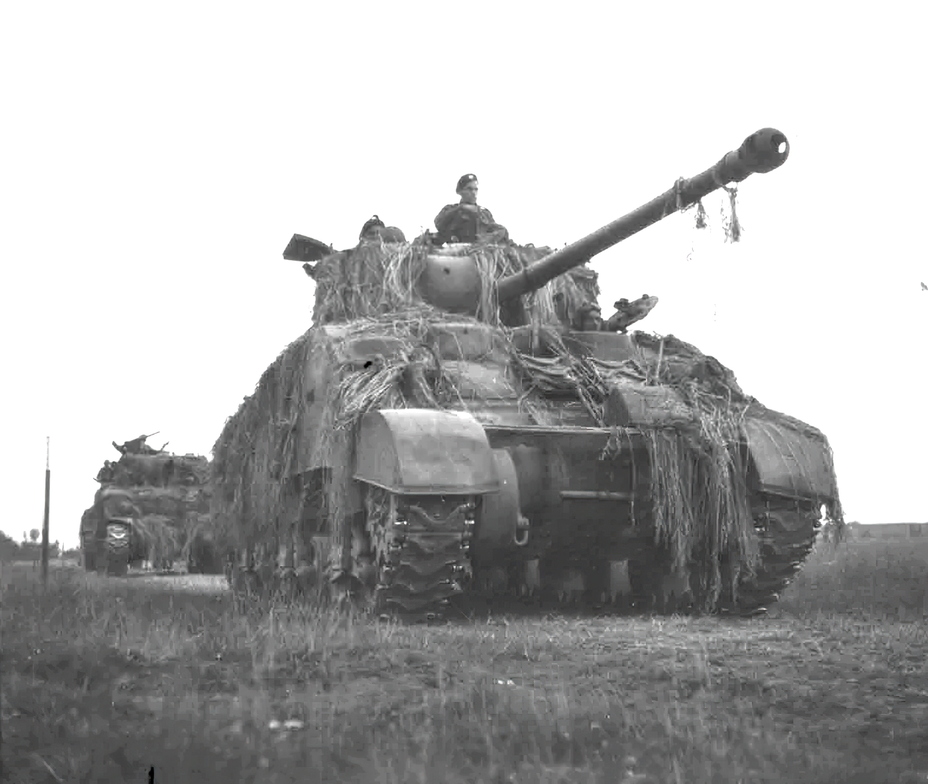
The gun was also far from perfect. The long barrel was muzzle-heavy and counterweights had to be used to keep it in balance, but they were often absent when tanks were delivered to end users. The large flash when the gun was fired made correcting fire at ranges of under 1000 yards (914 meters) difficult, as the impact of the shell could not be observed. The long barrel also made it hard to maneuver in forests. Crews complained about malfunctioning extractors and ammunition racks that were difficult to retrieve rounds from. Many crews also complained that the elevation flywheel was located too far from the gunner, which made it hard to use. The limited internal space left no room for personal belongings which is why Fireflies can often be seen carrying a large amount of crates and sacks of various types.
On the other hand, questionnaires sent to crews confirmed that the work on the muzzle brake described in the previous article was not done in vain. It worked well, did not unscrew itself, and was not damaged when the gun was fired. Crews also praised the telescopic sight, choosing it over the periscope since the latter easily lost zero and was vulnerable to bullets and shell splinters. Some crews wanted a second telescopic sight with less magnification than 6x. The rangefinder was not considered useful. It was only good when firing from prepared positions, but even in this case it was not used since crews did not train with it.
In addition to the aforementioned issues with APDS shot precision, it turned out that 17-pounder HE shells were ineffective. It was impossible to correct their fire due to the high muzzle velocity, as by the time the smoke and dust kicked up by the shot cleared there was no longer any sign of where the shell landed. HE rounds with reduced propellant were more effective, but the semiautomatic mechanism didn’t function with them and the casings often jammed during extraction. There were also issues with precision. The 2nd Canadian Armoured Brigade only used HE for massed battery-style fire at grid squares as a result. Issues with tracers didn’t go anywhere and applied to all types of shells.
Deliveries of American M48A1 HE shells with better fuses and higher HE content were expected by April of 1945. This was a temporary measure to restore the faith of troops in their tanks. The limited effectiveness of the Firefly against enemy personnel limited their number in units. An order was given to cap the number of tanks with 17-pounder at two per troop.
One interesting aspect of the 17-pounder gun was its use against fortifications. The Canadian 5th Armoured Division used APDS shot against bunkers, although they note that the effect was likely only psychological. The 1st Polish Armoured Division used only HE shells for these targets.
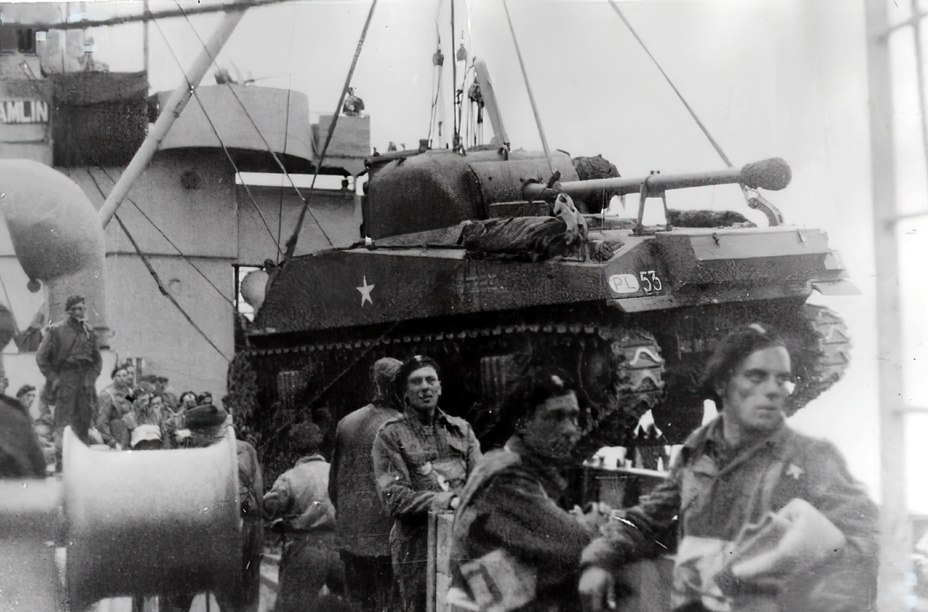
The use of 17-pounder guns against concrete was nothing new. The British tested the gun against a 2.3 meter thick reinforced concrete wall back in 1943. The results were not very impressive. AP shells punched through the concrete, but did not damage the rebar. This was enough to disable a pillbox, but a larger weapon would be needed to make a hole in the wall big enough for tanks to drive through. During trials 250 17-pounder shells and 80 5.5” shells were used up to make a hole large enough for a tank.
Shermans with 17-pounder guns were indeed a powerful force on the battlefield. They were used quite effectively against Tiger tanks during the famous battle at Villers-Bocage. Tigers #112 commanded by SS-Oberscharführer Heinrich Ernst and #121 commanded by SS-Untersturmfuhrer Wilfried Lukasius was knocked out by a Firefly tank from B Squadron of the City of London Yeomanry. Michael Wittmann himself decided to avoid an engagement with the Firefly, preferring to retreat. His tank was disabled by an anti-tank gun during his flight.
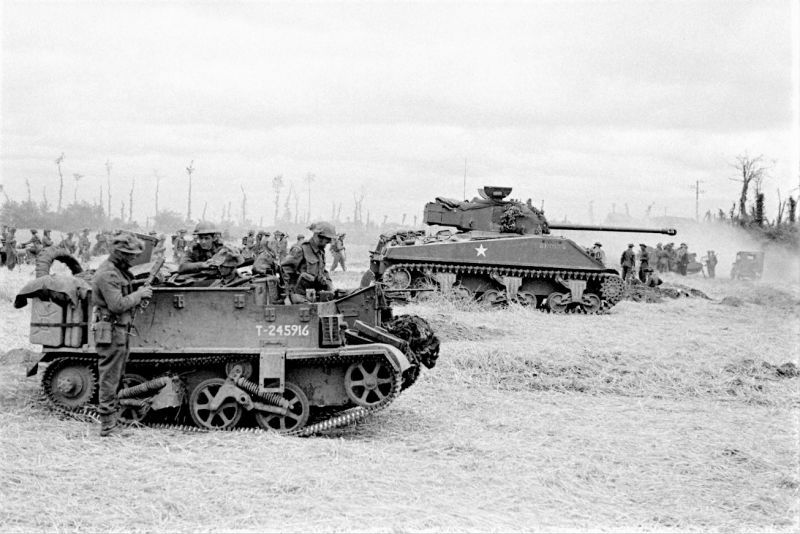
This was not Wittmann’s last meeting with a Firefly. On August 8th, 1944, 10 Tiger tanks from the 101st SS Heavy Tank Battalion were included in a Kampfgruppe commanded by SS-Obersturmbannführer Hans Waldmüller that was sent to counterattack advancing British, Canadian, and Polish tanks. A column of seven Tigers including Wittmann’s #007 was ambushed near Gaumesnil. It is most likely that a Firefly’s shot was the one that caused a fire and ammunition detonation of his Tiger tank.
Firefly crews did not consider themselves above hunting lesser tanks. Stuart Hills recalls that the Firefly was quite effective against lighter German vehicles:
“A Squadron squeezed past the Tiger and into a field on the right where they deployed. During the next two hours they systematically shot up every hedgerow as they advanced. Some of John Semken’s tanks were Sherman Fireflies, and they started knocking out one German tank after another.
Sergeant Dring claimed no less than four himself, and a Panther was shot up by the whole squadron as it drove across our front, its crew bailing out as it was still moving. The German infantry started to surrender, leaping out of the ground under the noses of the tanks, while our own infantry came up to finish things off. It had been a great day. Thirteen Panzer Mark IVs had been knocked out, along with a Tiger and a Panther. The enemy tank force defending Rauray had been eliminated and their infantry overrun. Aggressive tactics had paid off, and at a relatively small cost to ourselves. C Squadron had lost two tanks, with two dead and two wounded.”
Skilled use of the tank in battle gave good results. The 17-pounder earned the trust of British, Canadian, Czech, and Polish tankers. Bill Close, the commander of B Squadron of the 3rd Royal Tank Regiment, was disappointed when his unit transitioned to the new Comet tanks. He considered the Comet to have a better layout and higher manoeuvrability, but the lack of a powerful 17-pounder gun spoiled his impression somewhat.
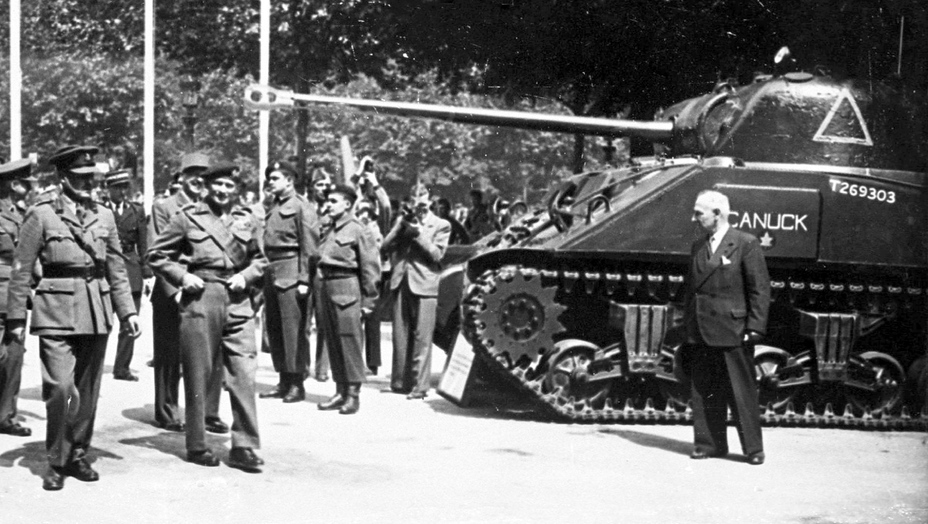
The British did not discard their ersatz tank destroyer right after the end of the war in Europe. Experiments to improve the suspension springs and trials of asbestos spent brass bags continued into the summer of 1945. Nevertheless, the Firefly was yesterday’s news. Trials of a King Tiger tank showed that the 17-pounder was not enough to deal with the latest heavy tanks even with high velocity APDS ammunition. There was no point in sacrificing crew comfort and tank reliability to carry such a gun. It seemed quite reasonable for the British tankers to switch to Comets and the Canadians to switch to the M4A2E8. The guns of these tanks had lower penetration than the Comet, but the tanks were better in other ways that were no less important.
Reverse Lend Lease
The Firefly had a chance to get famous in another army: the American one. The British offered their gun to the Americans in August of 1943, but their reaction was cool at best. Comparative trials were only carried out in May of 1944. The 17-pounder gun surpassed not only the American 76 mm gun, but also the 90 mm M3 gun that was just being installed on new GMC M36 tank destroyers. The Americans were stunned by this difference, but still did not adopt the British gun. Their reasons were much better than patriotic stubbornness.
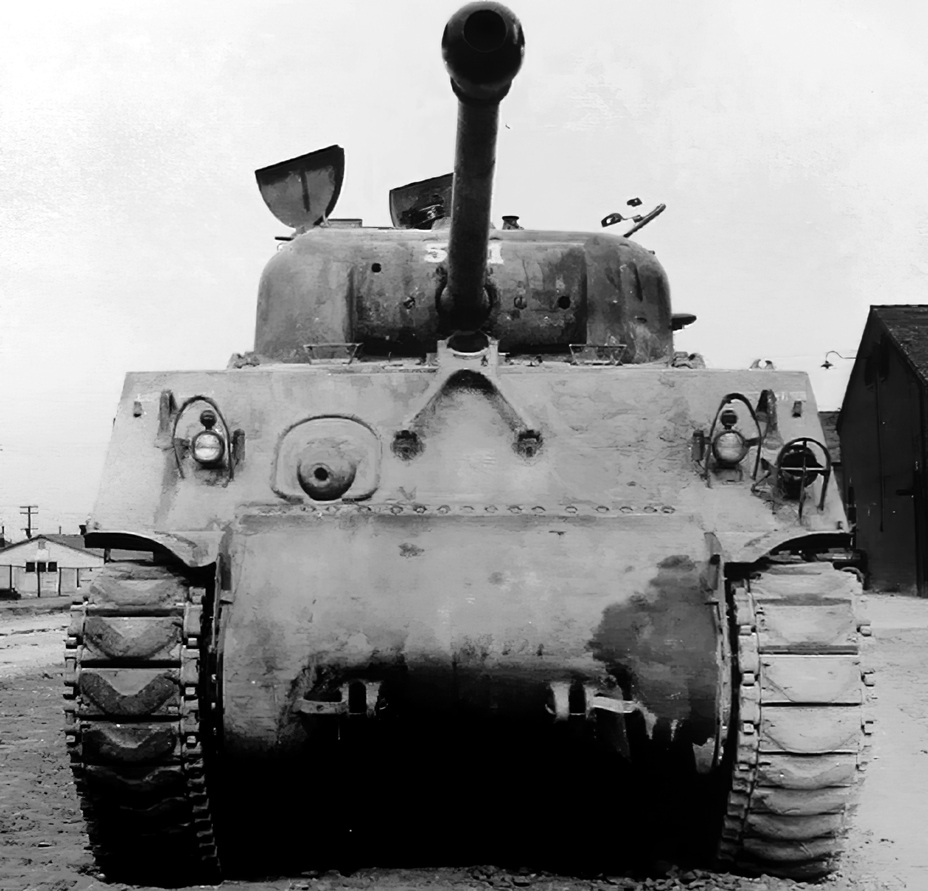
For one, the Americans did not consider a tank’s first mission to be fighting other tanks. Most of the tasks that a Sherman had to carry out required a powerful HE shell. Naturally, the Americans knew about Tigers and Panthers, but had so far mostly fought them in Italy where the terrain did not allow the German heavies to play to their strengths. Secondly, even though the 17-pounder had superior penetration it lost when it came to “soft” factors. The bulky gun was very difficult to work with in the cramped turret. While the difference in penetration could be made up using tungsten core HVAP ammunition, nothing could be done about crew comfort. The third reason was perhaps the most important of all: there was no time. In mere days the Western Allies were scheduled to land in Normandy. Operation Overlord promised to be exceptionally difficult, and there was simply no time to transition to a new gun. The Americans also doubted that the British could supply them with sufficient guns and ammunition.
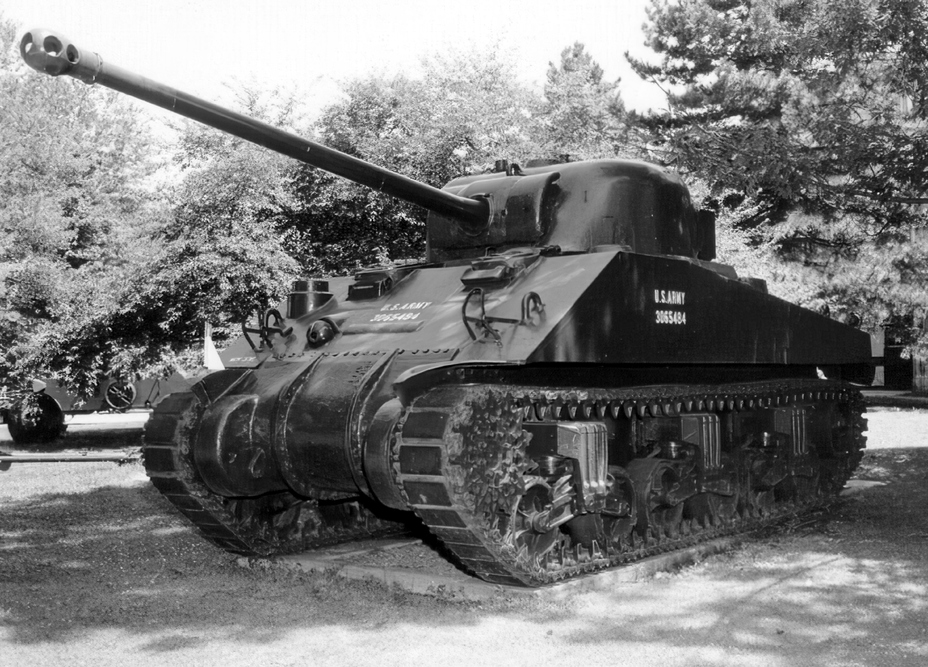
The Americans changed their mind after landing in Europe. The American army expected to lose about 7% of its tanks monthly, but the real losses were much greater: 21% in June and 15% in July. One of the reasons was linked to enemy tanks. Panthers that previously were met in only small amounts were now commonplace.
American tanks with 76 mm guns had not yet made it to the mainland, but calculations showed that they would penetrate the Panther’s gun mantlet at a range of only 200 meters. Without an alternative, General Omar Bradley turned to his British allies and asked for at least a handful of these tanks. He was met with a refusal. The British were also losing tanks faster than expected and had to replenish their own losses. There were no extra tanks.
An opportunity to acquire the Firefly came about in September. The British managed to replace their summer losses and some industrial capacity freed up as a result. The offer was to convert 100 American Shermans per month, about 40% of all British conversion work. This time the Americans refused: there were no tanks they could give up for conversion, as summer fighting consumed all of their reserves. The Americans were short 335 tanks per month just to replenish losses and could not spare 100 tanks. Shermans arriving in Europe set out for the front lines immediately. The shortage only grew and reached 865 tanks by January of 1945.
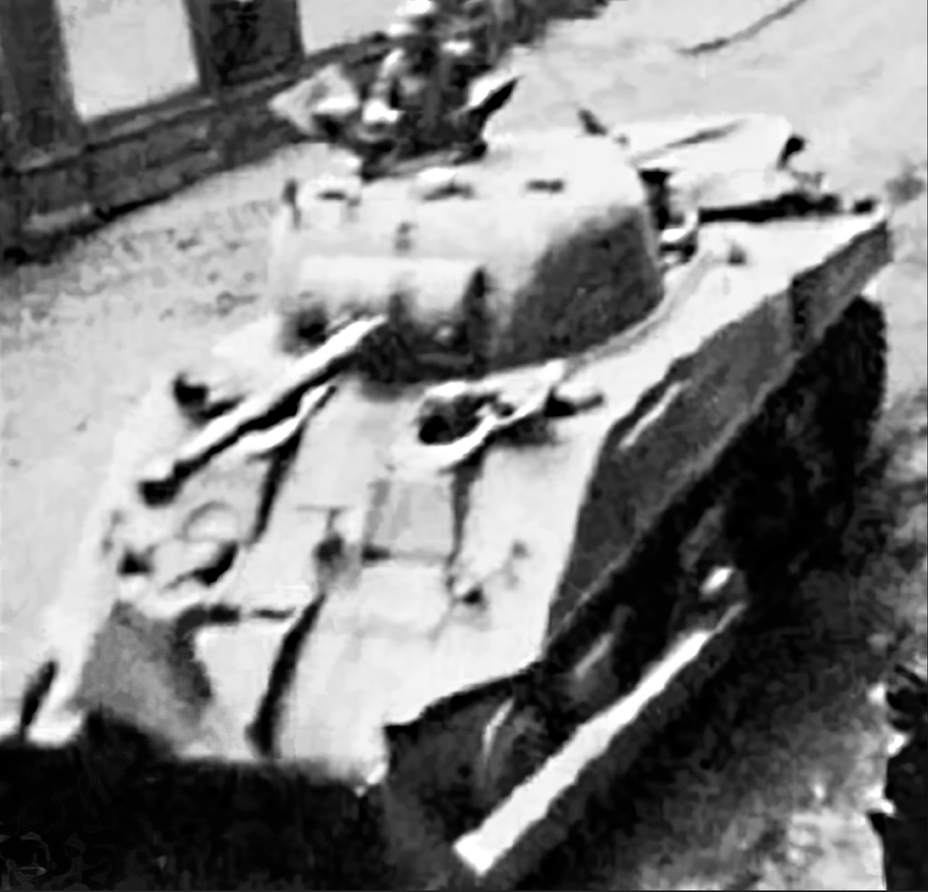
The American Firefly program was frozen, but not for long. Supplies of tanks with more powerful 76 mm guns increased, and tanks with shorter 75 mm guns languished in warehouses. The first batch of Shermans was sent from Europe to the UK on March 9th, 1945. Two prototypes were ready by March 15th and the pilot batch of 5 tanks was ready by March 31st. 160 Fireflies were ordered in total, but the order was cut to 80 units on April 7th. The Americans saw that the war was coming to an end and these tanks would not see battle. 40 tanks were sent to the 1st Army and 40 more to the 9th Army. 20 more vehicles were in the process of conversion when the order was halved and were claimed by the British.
The Americans were right: these tanks came too late to fight. The war in Europe was over and the main enemies of the Sherman tank in the Pacific were thinly armoured Japanese tanks. American Fireflies were only used in Europe in the occupational forces.
Firefly in retirement
The number of armies that had the Firefly in service increased after the end of the war, although not quite as much as it could have without an overloaded chassis and strained crew conditions. For instance, Sweden held comparative trials against a Panther and a Churchill tank. The Sherman Vc performed poorly and Sweden decided not to purchase them.
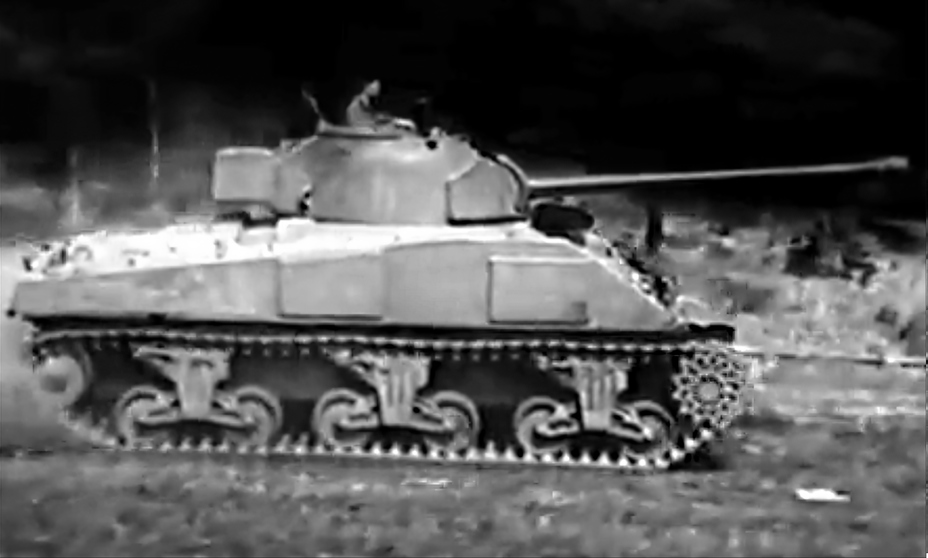
Some nations eagerly purchased these tanks regardless. The Netherlands kept a Firefly battalion until the end of the 1950s, and Belgium had three of them. The 1st Czechoslovak Independent Armoured Brigade went home after the war with 27 tanks of this type.
Argentina purchased almost 450 Shermans, about half of which were equipped with the 17-pounder gun. These were mostly the Sherman Ic with a hybrid hull. These tanks were modernized in the 1970s, receiving the more powerful Poyaud 520 engine and a 105 mm gun. They were renamed to Sherman Repotenciado and served until 1997.
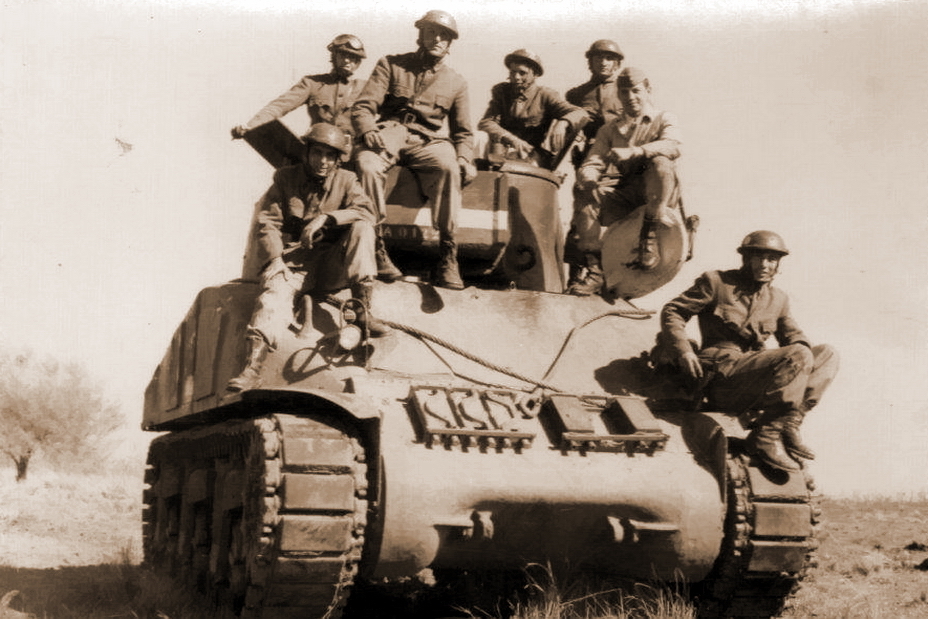
The Sherman Ic and Sherman Vc earned a mixed reputation. On one hand, the 17-pounder gun was a powerful anti-tank weapon with high penetration. On the other hand, the price paid to install such a gun on the Sherman tank was very high. The Sherman lost some of its best qualities: crew comfort, reliability, and a universal weapon. Nevertheless, the appearance of a tank capable of defeating all known German tanks had a great effect on the troops’ morale. The presence of a Firefly on the battlefield gave them something that cannot be measured in millimeters or kilograms: hope. No matter its drawbacks, the tank lived up to this hope and put in a considerable contribution towards victory over Germany.
Sources:
-
Canadian Military Headquarters, London (1939-1947) RG 24 C 2
-
John Buckley. British Armour in the Normandy Campaign 1944 – Routledge, 2004
-
Bill Close. Tank Commander: From the Fall of France to the Defeat of Germany – Pen & Sword, 2013
-
Mark Hayward. The Sherman Firefly – Barbarossa Books, 2001
-
Wolfgang Schneider. Tigers in Normandy – Stackpole Books, 2011
-
Steven J. Zaloga. M4 (76 mm) Sherman Medium Tank 1943-1965 – Osprey Publishing, 2003







